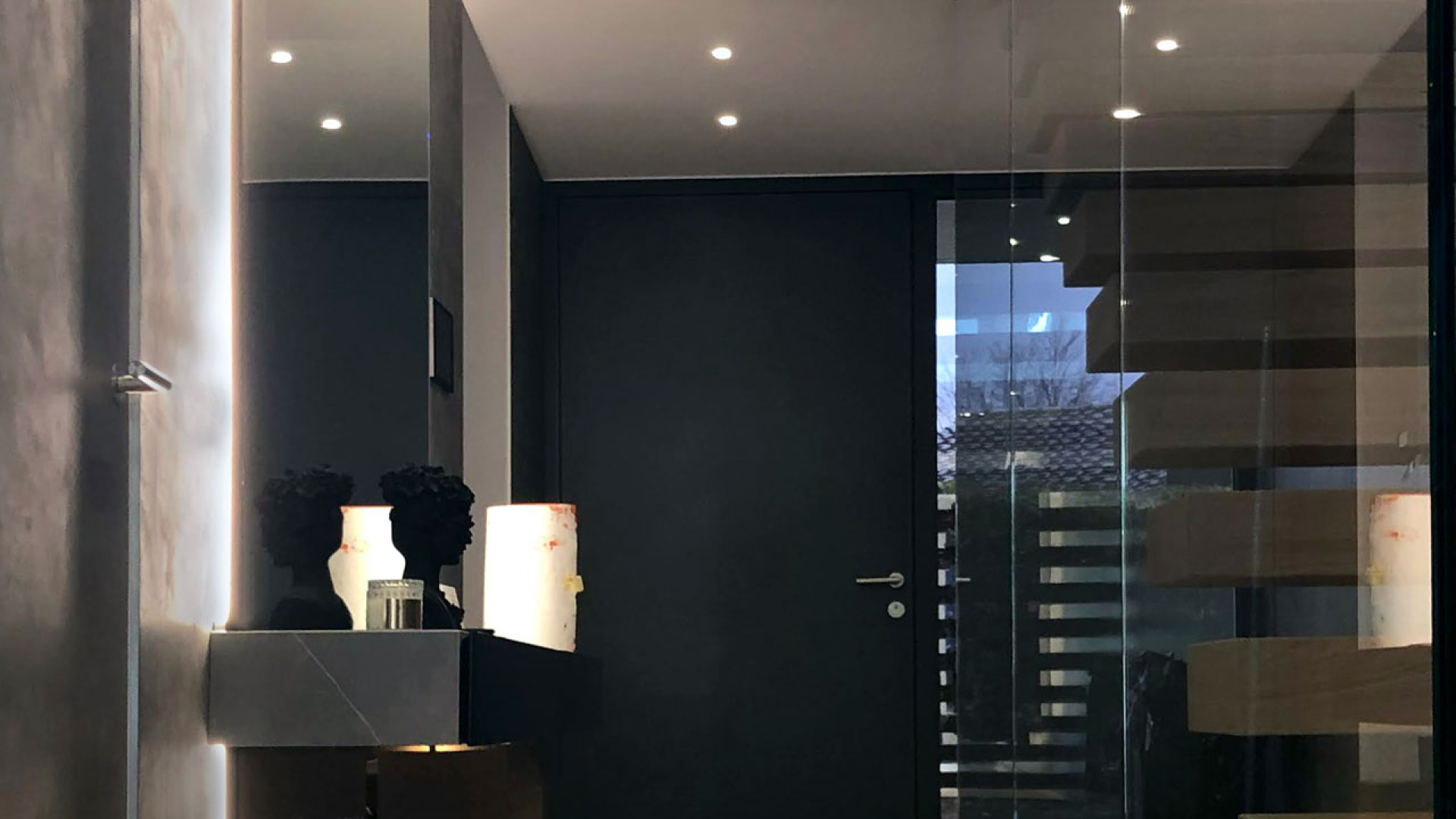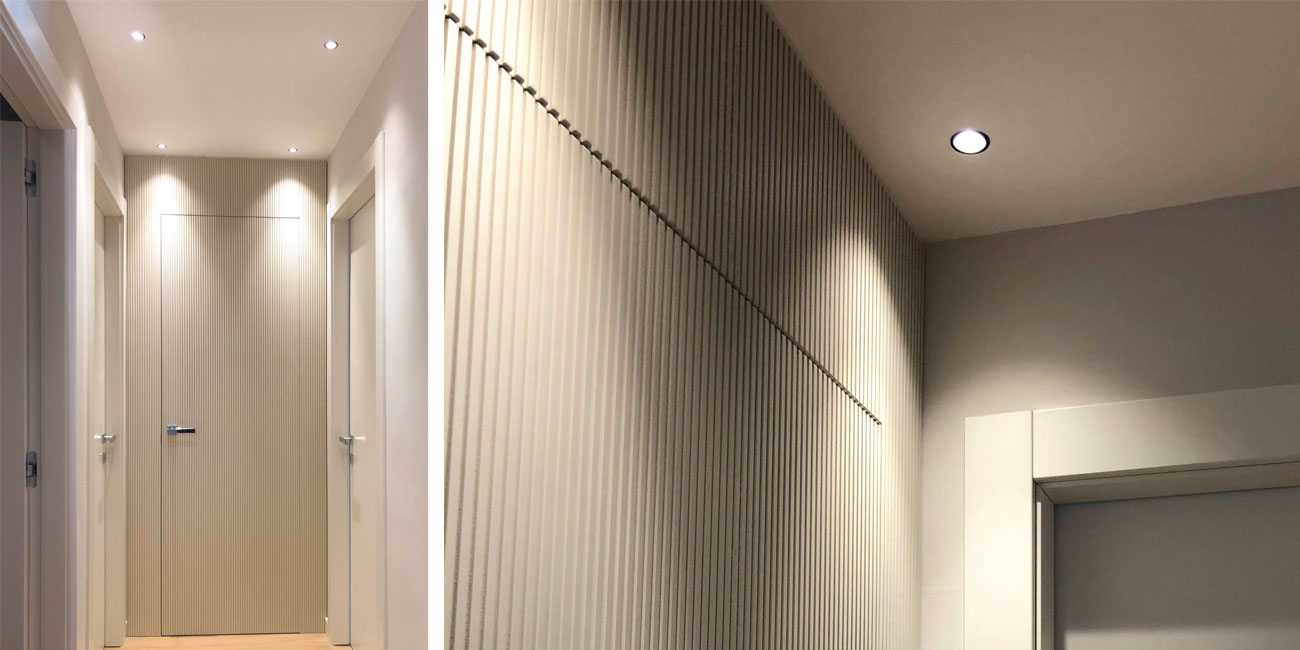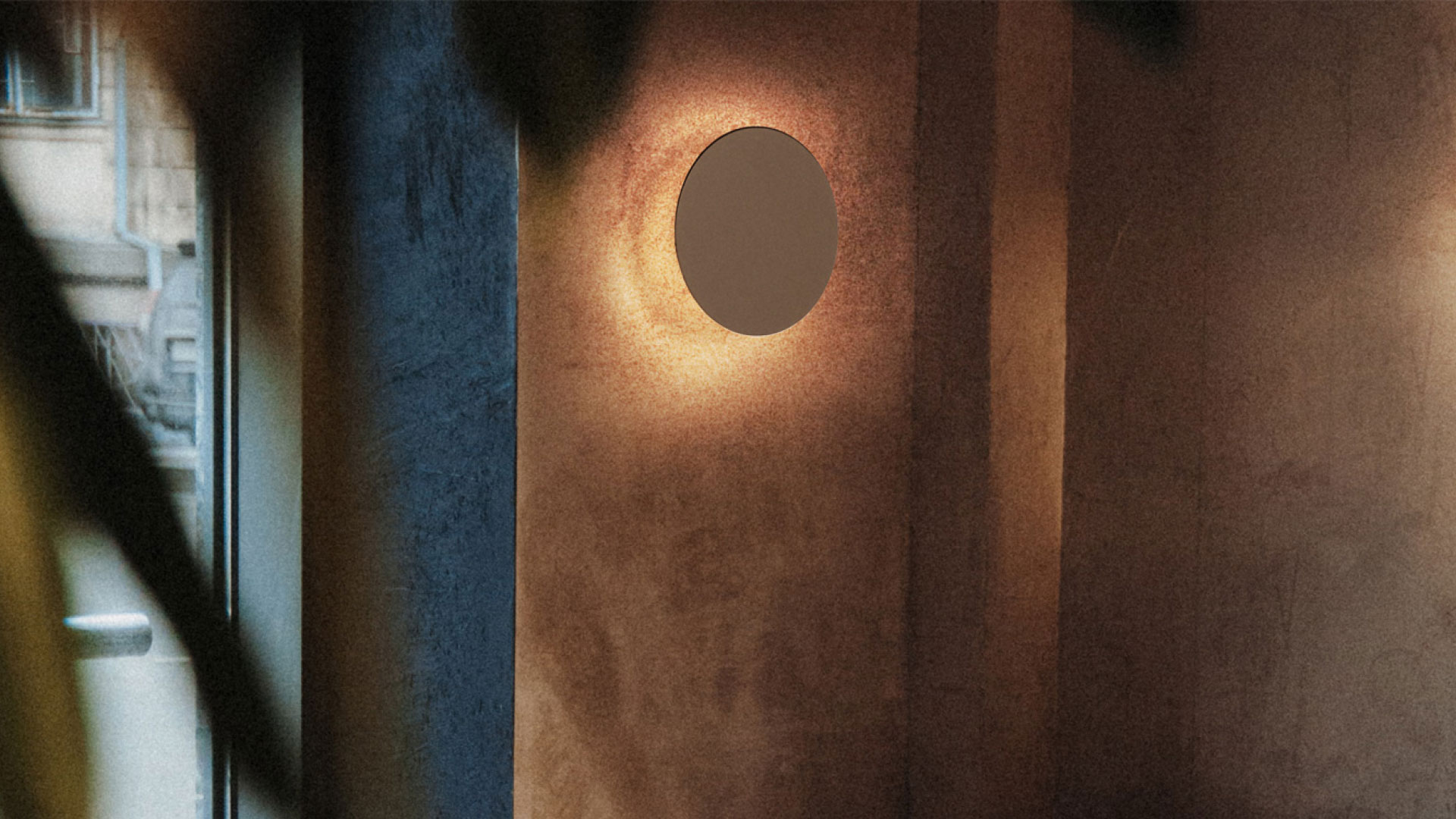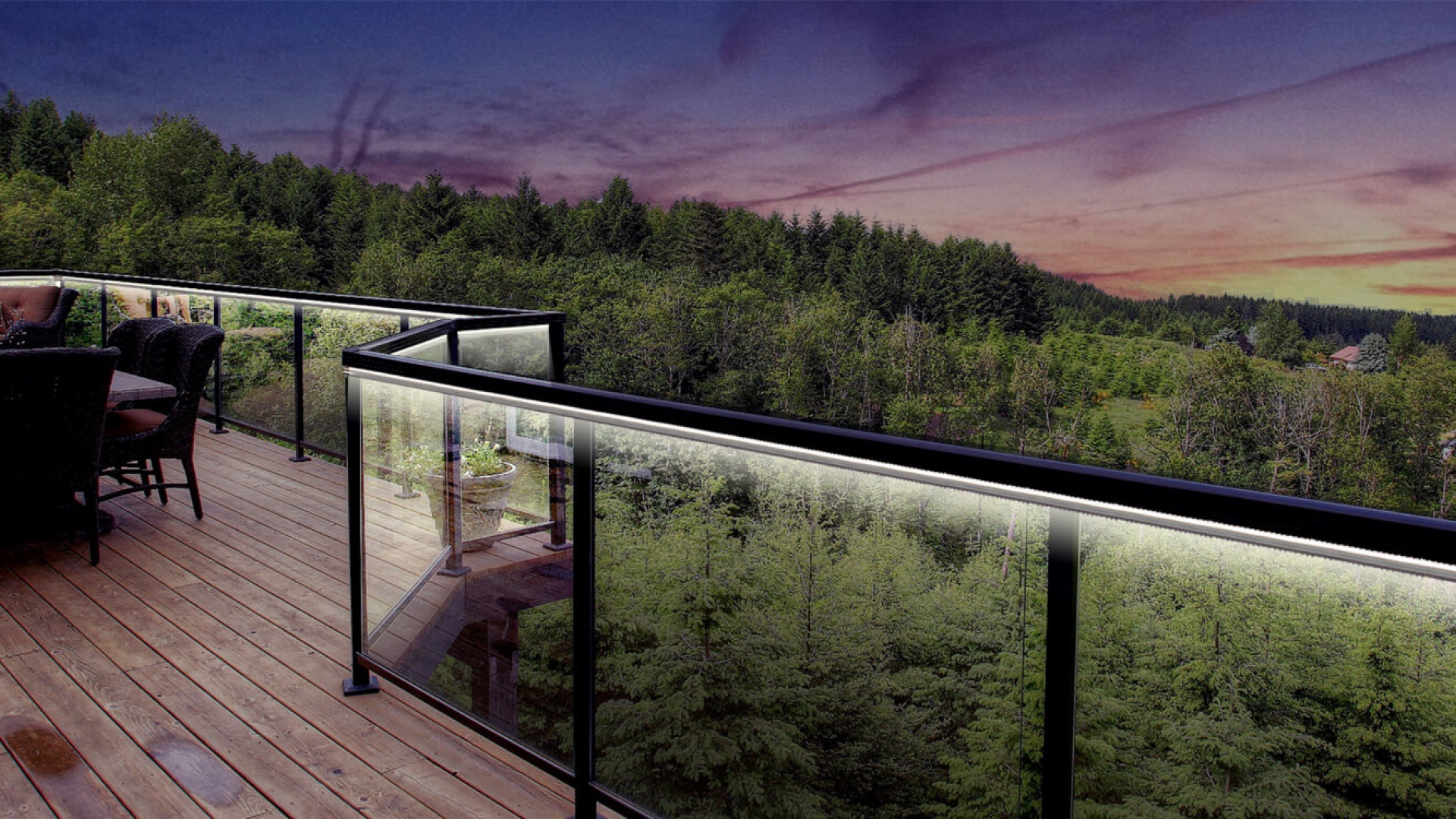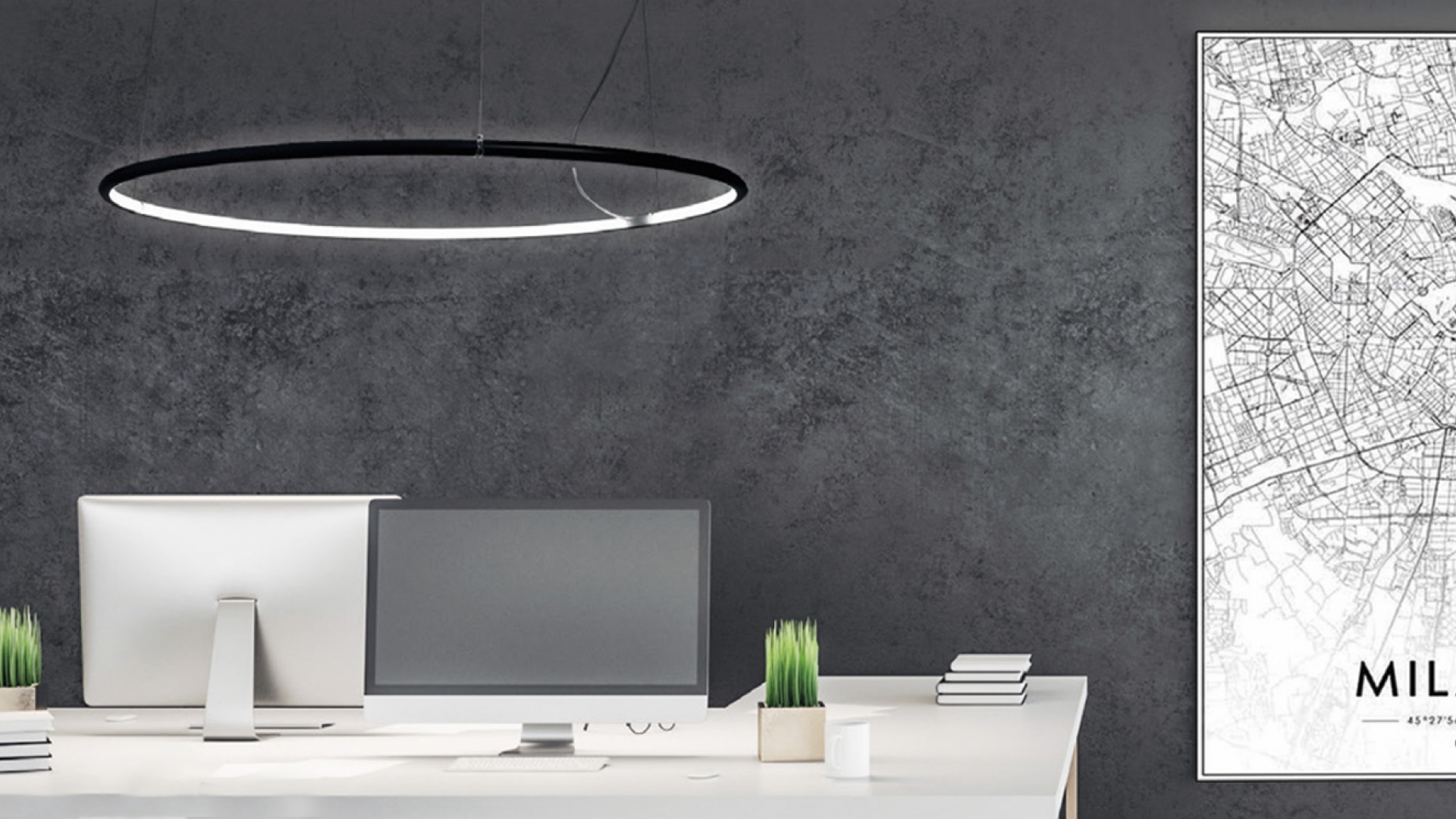The entrance area and the corridor are spaces in the home that are occupied for a short time and limited to passage. The lighting choices for these areas must derive mainly from how these rooms relate to the rest of the house.
The entrance area is a small space compared to the other rooms, and for proper lighting, it is sufficient to ensure a diffuse and non-invasive light of about 200 lux using ceiling lights, recessed lights and system, or pendant lamps.
If there is a console table or mirror near the entrance, wall lights or table lamps can be used to increase the amount of lighting with accent lighting.
If the entrance is visually projected into other rooms, it can be used lively and original lighting solutions that can be achieved by using: LED strips recessed or wall and pendant lamps to create a focal point.
The corridor connects various rooms and often has a long and narrow shape. Unless the house is open plan, the corridor is almost a space where natural light does not reach. The main common problem is poor lighting, due to the absence of direct light sources such as doors or windows.
Proper lighting in a corridor should provide about 150 lux: to create a pleasant and cozy passage.
For the illumination of passageways, solutions such as LED strips to be placed along the edge of the ceiling or skirting board, lights on the floor, recessed or adjustable spotlights, wall lights, ceiling lights, and pendant lamps that can create visually scenic environments prove to be effective.
Recessed spotlights are one of the best solutions for corridor lighting: they are pleasing to the eye and suit every style. More convenient than recessed spotlights are adjustable spotlights, which can be moved by directing the light beam where it is needed.
In a house with a modern furnishing style, it is possible to place many small LED lights on the ceiling to create a very atmospheric lighting composition and more scenery. If the wall at the end of the corridor is free, it can be used as a light installation with lights to enhance it and turn it into a light screen for the rest of the room.
Those who love the classic style can use wall sconces with a warm, soft light to illuminate the corridor. However, it is recommended to supplement this type of lighting with spotlights placed in strategic areas switched on if necessary. Wall lights should be placed on the side wall and can be utilized as a decorative element.
In the corridor, accent lighting can be used on paintings, and, in the case of unfurnished corners, floor-standing lamps are an excellent solution.
A different and very interesting solution is to illuminate the lower part of the corridor with recessed lights on the floor or along the skirting board, creating a true light guide that can illuminate the pathway in a discreet but very effective manner, especially during the night.

